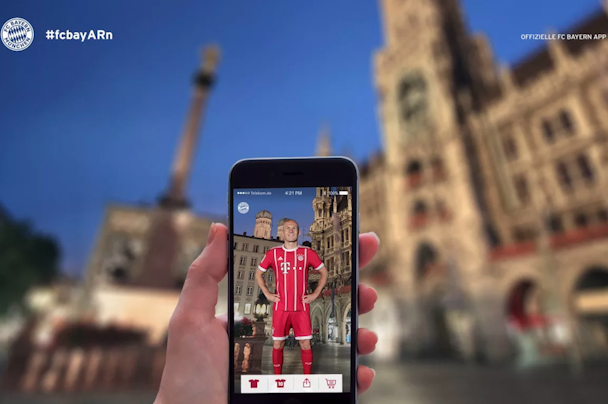How to immerse – and not irritate – consumers in augmented reality
Since time began, mankind has told stories.

From tales passed down through generations via drawings, to television and gaming - storytelling has always taken various forms but whatever the format, these stories inform, entertain and influence.
Today, in our inherently social world, consumers demand interactive experiences. Screen fatigue and the increasing need for bespoke experiences has led to the rising popularity of virtual reality and augmented reality. Pokémon Go proved the impact that AR can have on consumers at scale and since then the technology has unlocked a plethora of opportunities for brands. Brands including The Home Depot and Pottery Barn are currently working with our AR formats to make an impact like never before.
Marketers are integrating AR, VR and 360 video into campaigns more regularly and seamlessly. Snap has more recently let brands purchase its popular AR lenses in a more automated, targeted way. AR and mixed reality on mobile is certainly one to watch and we’ll see the technology increase from a nominal 10% of marketing budgets as adoption grows.
While we can’t say which formats we will be using to tell stories in decades to come, we can bet that the future of content is interactive.
With such personal, immersive experiences it’s even more important for marketers to have the right strategy in place and understand what their audience is likely to want, need or enjoy before serving content. Without that experiences won’t be immersive but likely jarring to the point where you turn a consumer off. And once you’ve done that in such an immersive environment, it’ll be hard to convince someone to come back and interact with your brand again any time soon.
Serving the right purpose and engaging the right audience
Immersive experiences, just like more traditional advertising, need to serve a purpose, whether it is better storytelling or connecting a brand’s deals to a consumer’s mobile wallet for their next purchase. Marketers need to ensure they don’t fall into the trap of thinking that just using AR for the sake of it being a new thing to try will create an engaging or relevant experience.
Regardless of the medium, stories always need to be told. Consumers want to know where products come from and how they can benefit their life.
Audiences need to believe they are making their purchases on a deeper level in comparison to others. They’re all about leaning forward in content and they demand interactivity versus being talked at. Understanding what motivates a consumer and certain interactions, whatever their age or demographic, is essential to engage an audience effectively.
For example we know that younger people are more likely to research certain products and brands before making a purchase. They consult reviews, make comparisons and look for validation from peers before buying something. They rely on real experiences and want authenticity, rather than blindly following an ad. This group also generally have a shorter attention span and so to resonate, experiences need to be personalised and in real time - whether they’re at home or on the go. Context and timing is a key factor as to whether they will give you their time to engage with your brand.
AR provides a tool to serve brand messages and stories in a captivating way that caters to the needs of this audience. It allows them to virtually try and experience the products they’re looking to buy in their real-time context. It tailors the experience to the individual and allows them to interact with the product and brand.
This signals the shift to ‘moments’-led marketing. By using human and machine-led insight, brands can build personalised campaigns around these customer motivations. And brands can learn a lot from these moments, monitoring the response to different messages, in different contexts and times to enhance future campaigns.
Emotion in AR?
Any good story strives to make an emotional connection with an audience. New ad formats are no different. Whether it’s AR, VR or other online advertising, brands should always keep the audience’s emotions in mind - what makes them happy, excited? What will make a difference to them?
Introducing AR into everyday campaigns can bring a brand’s narrative to life and reach consumers on a more personal level by making things relevant to their own lives. Tapping into emotive milestones like weddings or first homes means that brands can utilise AR to show consumers where their new furniture or wedding photos could fit around the home. It’s about finding the value for your audience and wrapping the experience around that.
AR and virtual experiences are coming into their own. We’re seeing the impact this technology can have and the emotional connections it can help brands build - if approached in the right way. However, without the right story or context, is it merely a gimmick? If I’m giving up some of my precious time to engage with your brand, I want to know that I’m getting something out of it; whether it’s to get information that will help me, inspiration for my life, giving me something that will add value to my purchases with the brand, or even just purely enjoying the experience. The narrative should truly augment the experience, as is its definition, and lead me through the story to ultimately achieve any one of these.
Storytelling is a millennia-old tradition for a reason and it will always be the basis of good marketing, whatever the format.
Mark Melling is head of RYOT Studio, EMEA, Oath
